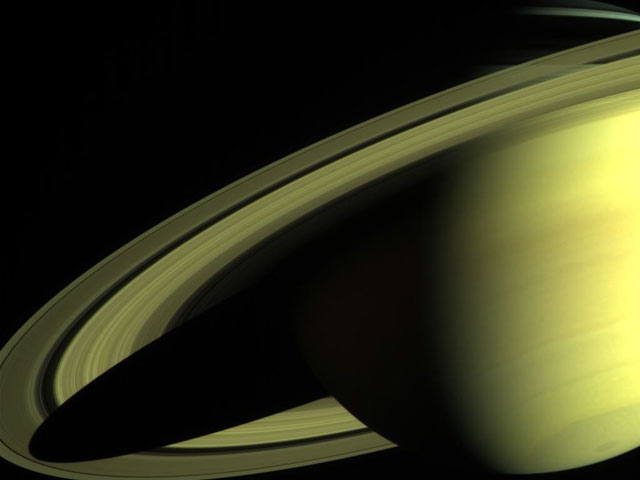You are using an out of date browser. It may not display this or other websites correctly.
You should upgrade or use an alternative browser.
You should upgrade or use an alternative browser.
Satan Sneak-Attacks Area Church (Very Cool Pic Inside, No Boobies!)
- Thread starter Phaedrus
- Start date
Two images of Comet C/2002 T7, which is currently on tour of the inner solar system. You can actually catch this one with the naked eye if you're an early to rise (or late to bed) type; it is just above the eastern horizon in the constellation Pisces right around dawn.


Bear in mind that while sunlight normally disperses light from other sources, when the sun is just past the horizon (before or after the day) it causes rocky bodies like planets and moons and comets to become significantly brighter due to the sunlight being reflected off of them. In the case of C/2002 T7 this effect is even more dramatic because its current position is in between the earth and the sun (think of Venus, or the full moon.)
Phaedrus


Bear in mind that while sunlight normally disperses light from other sources, when the sun is just past the horizon (before or after the day) it causes rocky bodies like planets and moons and comets to become significantly brighter due to the sunlight being reflected off of them. In the case of C/2002 T7 this effect is even more dramatic because its current position is in between the earth and the sun (think of Venus, or the full moon.)
Phaedrus

Resembling a diamond-encrusted bracelet, a ring of brilliant blue star clusters wraps around the yellowish nucleus of what was once a normal spiral galaxy in this new image from NASA's Hubble Space Telescope (HST). This image is being released to commemorate the 14th anniversary of Hubble's launch on April 24, 1990 and its deployment from the space shuttle Discovery on April 25, 1990.
The sparkling blue ring is 150,000 light-years in diameter, making it larger than our entire home galaxy, the Milky Way. The galaxy, cataloged as AM 0644-741, is a member of the class of so- called "ring galaxies." It lies 300 million light-years away in the direction of the southern constellation Dorado.
More info here
Phaedrus

Why is the sky near Antares and Rho Ophiuchi so colorful? The colors result from a mixture of objects and processes. Fine dust illuminated from the front by starlight produces blue reflection nebulae. Gaseous clouds whose atoms are excited by ultraviolet starlight produce reddish emission nebulae. Backlit dust clouds block starlight and so appear dark. Antares, a red supergiant and one of the brighter stars in the night sky, lights up the yellow-red clouds on the upper left. Rho Ophiuchi lies at the center of the blue nebula on the right. The distant globular cluster M4 is visible just below Antares, and to the left of the red cloud engulfing Sigma Scorpii. These star clouds are even more colorful than humans can see, emitting light across the electromagnetic spectrum.
<BLOCKQUOTE class="ip-ubbcode-quote"><font size="-1">quote:</font><HR>Originally posted by Big Lou:
How come we never see any pictures that good of the moon, more importantly, the flag that we "supposedly" planted on the planet surface?
Big Lou<HR></BLOCKQUOTE>
Buzz Aldrin got a little defensive when asked about the moon:
http://www.933flz.com/audio/buzzaldrin_sm.wmv
How come we never see any pictures that good of the moon, more importantly, the flag that we "supposedly" planted on the planet surface?
Big Lou<HR></BLOCKQUOTE>
Buzz Aldrin got a little defensive when asked about the moon:
http://www.933flz.com/audio/buzzaldrin_sm.wmv
Closer every day ... a shot taken two weeks ago by the Cassini spacecraft, now just 15 million miles from Saturn and set to enter orbit on the 1st of July, seven years after it left Earth.

Cassini will spend four years orbiting Saturn, and launch what may be one of the most significant missions in space exploration to date when the Huygens probe, a smaller vehicle which has been piggybacking on Cassini, is dispatched to the surface of the Saturnian moon Titan.
Phaedrus

Cassini will spend four years orbiting Saturn, and launch what may be one of the most significant missions in space exploration to date when the Huygens probe, a smaller vehicle which has been piggybacking on Cassini, is dispatched to the surface of the Saturnian moon Titan.
Phaedrus

Mammatus Clouds over Monclova, Mexico.
Unlike virtually every other type of cloud, the mammatus cloud does not have a smooth underside. Because it is typically only seen in inclement weather under very specific conditions the mammatus cloud is often mistaken for an ill portent such as the formation of a tornado -- however they are not only harmless but are generally only seen after the worst of the storm is passed.
More on mammatus clouds here.
Phaedrus










